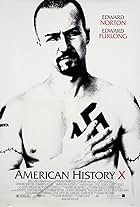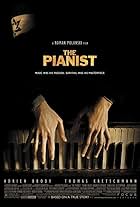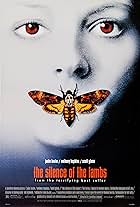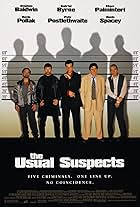12-year-old Mathilda is reluctantly taken in by Léon, a professional assassin, after her family is murdered. An unusual relationship forms as she becomes his protégée and learns the assassin... Read all12-year-old Mathilda is reluctantly taken in by Léon, a professional assassin, after her family is murdered. An unusual relationship forms as she becomes his protégée and learns the assassin's trade.12-year-old Mathilda is reluctantly taken in by Léon, a professional assassin, after her family is murdered. An unusual relationship forms as she becomes his protégée and learns the assassin's trade.
- Awards
- 5 wins & 16 nominations total
Willi One Blood
- 1st Stansfield Man
- (as Willie One Blood)
Lucius Wyatt Cherokee
- Tonto
- (as Lucius Wyatt 'Cherokee')
Maïwenn
- Blond Babe
- (as Ouin-Ouin)
- Director
- Writer
- All cast & crew
- Production, box office & more at IMDbPro
Storyline
Did you know
- TriviaIt was Jean Reno's decision to play Léon as if he were "a little mentally slow" and emotionally repressed. He felt that this would make audiences accept that Léon wasn't someone who would take advantage of a vulnerable young girl. Reno claims that for Léon, the possibility of a physical relationship with Mathilda is inconceivable, so when such a relationship is discussed in the movie, Reno very much allowed Portman to be emotionally in control of the scenes. Reno stated that his rationale for agreeing to play the part was that his character was a 10 year old boy in love with a 12 year old girl, so the relationship could only ever be platonic.
- GoofsMany viewers believe that Stansfield never saw Leon, and therefore could not recognize him at the end, but may not remember that Stansfield visited Tony at the restaurant after Leon had killed part of Stansfield's crew. Thus, being intimidated and threatened by Stansfield, it could be assumed that Tony gave him a complete description of Leon, and possibly a photograph.
- Crazy creditsUnder the "SPECIAL THANKS" heading you will find: Chevalier KAMEN (Prince of the Mash Potatoes) Byblos Bill (King of Saint Tropez) Princess Trudy (Queen of Hearts)
- Alternate versionsIn the original version there is a shot of Tony's place at night just before Stansfield and his men come in on the birthday party. This isn't in the 'Version integrale' (International Cut).
- SoundtracksShape Of My Heart
Written by Sting and Dominic Miller
Introduction by Dominic Miller
Performed by Sting
Courtesy of Magnetic Ltd. / A&M Records
by arrangement with PolyGram Special Projects
Featured review
An interview with Anne Parillaud, in the Evening Standard, 24.8.90, it was said that the message of Nikita is not one of violence but the idea is that people who are full of despair and missing love are not alone.
This idea continues in Léon. Léon was Besson's first foray into international film production. The similarities, or parallels, between Nikita and Léon are undoubted. Both the central protagonists attempt to come to terms with their dysfunctionality, to society, against a background of violence, which they both continue to act upon as the agent of someone else. There is no clean difference (we may also include Le Dernier Combat for comparison.) The only difference is gender.
I always found that until obtaining the "Version Integral" there was a character hole in the plot. The original cut released for US audiences was felt, by Besson, had an "offending" scene cut which ruined later scenes. The American test audiences hated it, seeing it as perverse and paedophiliac. The film was still panned by US critics as quasi-child pornography on general release. What it to be understood about this film, and this is what infuriated Besson, is that the film is about pure love. Not sex, which is all the Americans, could see.
And so we have ascertained that the characters in Besson's films are, simply, great. Then there is the action which is all the grace and style of Nikita. Typical of Besson's style with fast action-shooting and violent characterisation. This has to be one of Jean Reno's and by far Natalie Portman's best screen performance. To me, Gary Oldman plays his part to the tee, said by some magazines to be the best screen bad guy - it is one of his best performances.
Stylisation and excess are hallmarks of Besson's work. Characters are larger than life. Décors are in excess of realism. Besson's characters lack psychological depth. "The sumptuous and the ornate cohabit with the violent or the vulgar." Besson's use of excess is also extremely playful mixing violence with humour. Besson's work appeals to the tastes of popular culture and may not please that of the elite - arguably a reason for the rejection of his work by many intellectual film journals.
I have yet to hear of a person putting a bad word against this film. There is nothing I can personally fault so I give this film 10/10, a score only two other somewhat different films hold in my IMDb list of 345 films - "The Wizard of Oz" and "La Cité des Enfants perdu". If you like French Cinema or consider yourself a cinephile you must see the latter.
This idea continues in Léon. Léon was Besson's first foray into international film production. The similarities, or parallels, between Nikita and Léon are undoubted. Both the central protagonists attempt to come to terms with their dysfunctionality, to society, against a background of violence, which they both continue to act upon as the agent of someone else. There is no clean difference (we may also include Le Dernier Combat for comparison.) The only difference is gender.
I always found that until obtaining the "Version Integral" there was a character hole in the plot. The original cut released for US audiences was felt, by Besson, had an "offending" scene cut which ruined later scenes. The American test audiences hated it, seeing it as perverse and paedophiliac. The film was still panned by US critics as quasi-child pornography on general release. What it to be understood about this film, and this is what infuriated Besson, is that the film is about pure love. Not sex, which is all the Americans, could see.
And so we have ascertained that the characters in Besson's films are, simply, great. Then there is the action which is all the grace and style of Nikita. Typical of Besson's style with fast action-shooting and violent characterisation. This has to be one of Jean Reno's and by far Natalie Portman's best screen performance. To me, Gary Oldman plays his part to the tee, said by some magazines to be the best screen bad guy - it is one of his best performances.
Stylisation and excess are hallmarks of Besson's work. Characters are larger than life. Décors are in excess of realism. Besson's characters lack psychological depth. "The sumptuous and the ornate cohabit with the violent or the vulgar." Besson's use of excess is also extremely playful mixing violence with humour. Besson's work appeals to the tastes of popular culture and may not please that of the elite - arguably a reason for the rejection of his work by many intellectual film journals.
I have yet to hear of a person putting a bad word against this film. There is nothing I can personally fault so I give this film 10/10, a score only two other somewhat different films hold in my IMDb list of 345 films - "The Wizard of Oz" and "La Cité des Enfants perdu". If you like French Cinema or consider yourself a cinephile you must see the latter.
Details
- Release date
- Countries of origin
- Official site
- Languages
- Also known as
- El perfecto asesino
- Filming locations
- Paris, France(Leon's apartment interiors)
- Production companies
- See more company credits at IMDbPro
Box office
- Budget
- $16,000,000 (estimated)
- Gross US & Canada
- $19,501,238
- Opening weekend US & Canada
- $5,306,558
- Nov 20, 1994
- Gross worldwide
- $20,278,989
- Runtime1 hour 50 minutes
- Color
- Sound mix
- Aspect ratio
- 2.39 : 1
Contribute to this page
Suggest an edit or add missing content


































